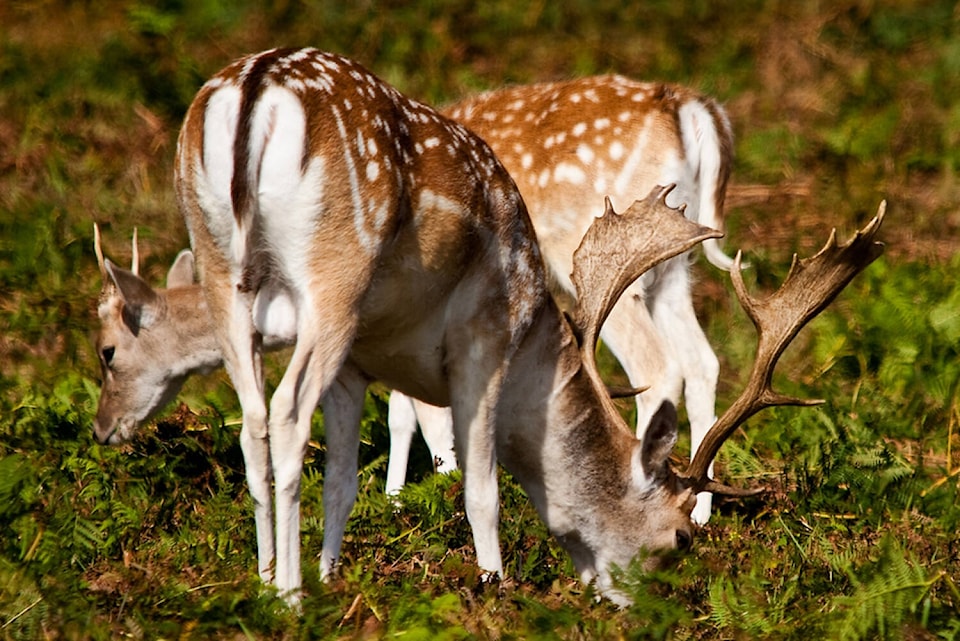Seven of the 84 deer that have been removed from Sidney Island were confirmed as native black-tailed deer after a recent cull, according to WSANEC community engagement co-ordinator Eric Pelkey.
The cull was a part of Parks Canada’s first phase of their invasive fallow deer eradication project. Between Dec. 1 and Dec 11, three highly trained, certified marksmen used globally supported methods to reduce the deer population on Sidney Island, according to Parks Canada.
Along with Pelkey reporting that seven of the deer retrieved after the cull were black-tailed, he added that the deer population on the Island has been completely wiped out.
“They took all of them and we’re pretty confident that the black-tail deer will re-establish himself because, in our experience, the black-tail deer are really good swimmers between the islands and the Gulf Islands,” said Pelkey.
READ MORE: Parks Canada plan to eradicate invasive deer from B.C. island approved
Marksmen worked with Parks Canada staff and First Nations harvesters to maximize the amount of meat and materials recovered. Meat, hides and other usable materials were distributed within local WSANCE communities. Harvesters recovered approximately 800 kilograms of meat.
“We had about 10 of our members out there on the island for the full term of the cull,” said Pelkey. “They were the ones that retrieved all of the carcasses.”
After collecting the deer, the 10 members prepared them for delivery to the butcher. The skins, hooves and antlers were all removed.
READ MORE: Parks Canada responds to backlash about Sidney Island deer eradication
The 84 deer were killed through a mix of nighttime ground-based hunting and daytime aerial work. The aerial work involved one marksman operating out of a single helicopter deployed for a total of 15 hours over five days. The helicopter was used to survey terrain and to dispatch deer.
Parks Can told Black Press Media in a statement that “the humane treatment of animals is a priority for all project partners.”
The recovery teams reported that the majority of animals were dispatched with a single shot; in the remaining cases, a second shot was taken to be certain of immediate and humane death.
Parks Canada said it will continue to work with representatives of the community to plan for the next phase and share regular updates with residents. The second phase is planned to take place between fall 2024 and spring 2025. Temporary fencing will be installed across Sidney Island. This will create large enclosed zones ranging in size from approximately 40 to 120 hectares. Each zone will be cleared by a marksman working with scent-tracking dogs.
Parks Can safety officers and a community liaison were present for the duration of the phase to oversee the safe implementation of the project activities and to provide daily updates to members of the Sidney Island residential community.
Pelkey is optimistic about the future of diverse ecology on Sidney Island.
“This spring the restoration of the island will begin and then hopefully we’ll see the black-tailed deer there starting to re-establish himself again,” said Pelkey.
READ MORE: ‘Looking for mom’: Kittens abandoned in cardboard box at Victoria shelter
